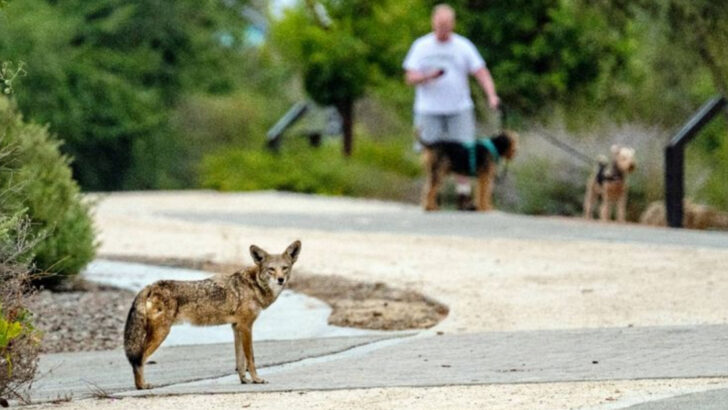Coyotes are everywhere—and they’re watching when you least expect it. These clever canines don’t just survive in the wild. They thrive in suburbs, slip through city streets, and vanish like shadows in the brush. Think they only howl at the moon in desert silence? Think again. In nine U.S. states, coyotes have gone full-on takeover mode—stalking farms, strolling through neighborhoods, and popping up in the unlikeliest places. They’re ghostly. Gritty. Practically unstoppable. And they’re leaving paw prints all over America’s backyard.
California’s Urban Survivors

In the bustling urban landscapes of California, coyotes have mastered the art of urban survival. These canines navigate through city streets, often seen slinking through alleyways or trotting along sidewalks at dawn. Their adaptability to urban life is nothing short of remarkable.
Despite the challenges posed by city life, including traffic and human activity, coyotes have found ways to coexist with their human neighbors. They’ve become a part of the urban ecosystem, thriving in parks and green spaces, often unnoticed until their iconic howl pierces the night. California truly showcases the coyote’s resilience.
Arizona’s Desert Dwellers
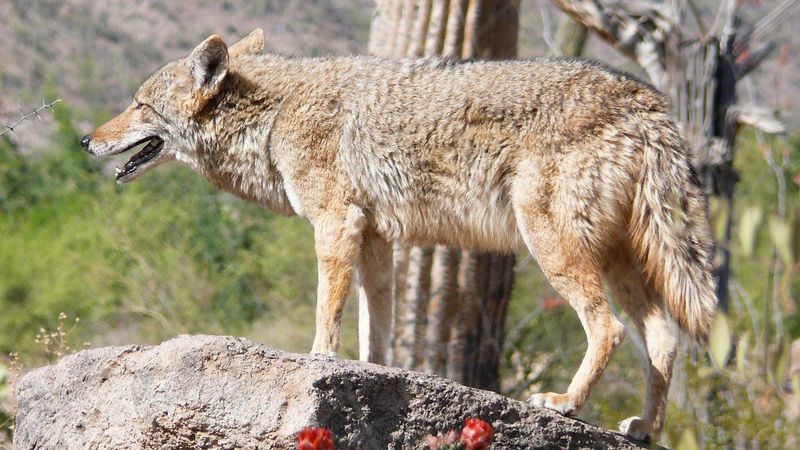
Amidst the arid expanses of Arizona, coyotes stand as resilient desert dwellers. These canines have adapted to harsh, dry climates, often seen trotting across sun-baked sands or resting in the sparse shade of desert flora. Their presence is a testament to nature’s adaptability.
In a landscape where water is scarce, coyotes have honed their skills in finding sustenance and hydration. Their keen senses and survival instincts are unparalleled, making them an integral part of the desert ecosystem. Arizona’s coyotes epitomize the spirit of perseverance.
New Mexico’s Nighttime Nomads
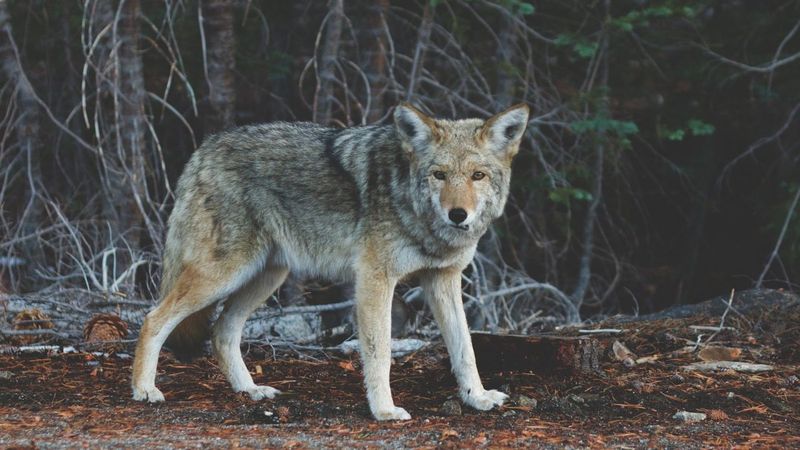
When the sun sets over New Mexico, coyotes embark on their nightly journeys. These nocturnal nomads traverse the vast desert landscapes, guided by the moon and stars. Their haunting howls echo through the cool night air, a signature of their presence.
Coyotes in New Mexico have adapted to a life under the stars, finding food and shelter in the rugged terrain. Their nighttime activities are both a survival strategy and a way to avoid the daytime heat. In New Mexico, the coyote’s nightly ventures are a dance of survival.
Texas’ Prairie Wanderers

In the wide-open prairies of Texas, coyotes roam freely, embodying the spirit of exploration. These prairie wanderers are often seen moving across the vast grasslands, their presence marked by the swaying of tall grasses.
The expansive fields offer ample hunting opportunities, allowing coyotes to thrive. Their ability to blend into the prairie landscape speaks to their adaptability and keen survival instincts. In Texas, coyotes are an enduring symbol of the untamed wilderness, perfectly adapted to the rolling plains.
Montana’s Mountain Residents

High in the rugged mountains of Montana, coyotes carve out a life among the peaks. These mountain residents are adept at navigating steep terrains, often seen against a backdrop of snow-capped summits.
Montana offers a challenging yet rewarding environment for coyotes, with abundant wildlife providing sustenance. Their presence in this majestic landscape highlights their versatility and enduring spirit. Coyotes in Montana are a testament to nature’s resilient design, thriving where few other species can.
Wisconsin’s Woodland Wanderers

In the dense forests of Wisconsin, coyotes are elusive woodland wanderers. These canines navigate the underbrush with silent grace, their presence often only revealed by tracks in the soft earth.
The woodlands offer a rich tapestry of resources, allowing coyotes to hunt and forage effectively. Their ability to remain unseen is a testament to their adaptability and stealth. Wisconsin’s coyotes are masters of the forest, moving quietly through the trees, embodying the mystery of the wild.
Colorado’s Alpine Adventurers

Amidst Colorado’s picturesque alpine regions, coyotes explore with adventurous spirits. These canines navigate rocky terrains and vibrant wildflower meadows, embodying the essence of alpine life.
Coyotes here are accustomed to the changing seasons and altitudes, adapting with remarkable ease. Their presence adds to the rich biodiversity of the alpine environment, contributing to the ecological balance. In Colorado, coyotes are not just survivors but thriving adventurers in the heart of nature’s grandeur.
Nevada’s Desert Ghosts
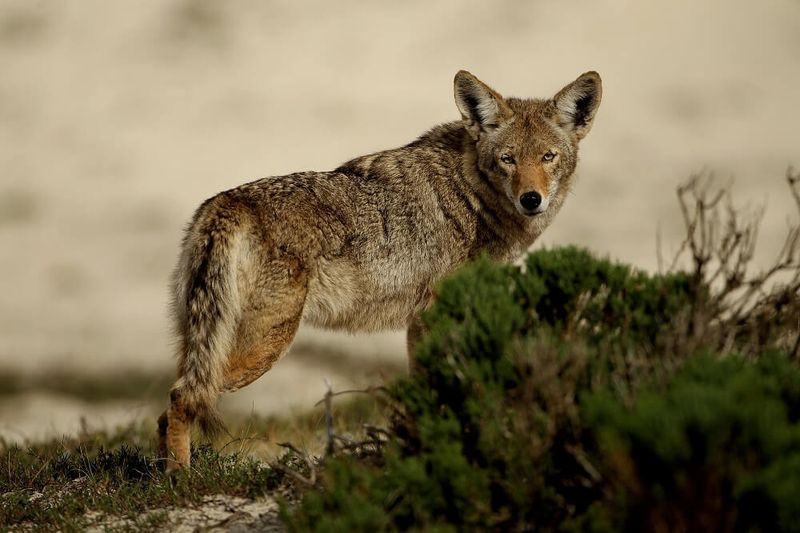
In Nevada’s haunting deserts, coyotes are often referred to as “ghosts of the desert.” These elusive creatures move through the barren landscapes with an ethereal grace, their presence hinted at by fleeting glimpses and distant howls.
Surviving in such a harsh environment requires cunning and resilience, traits that Nevada’s coyotes have in abundance. They are a symbol of the wild heart of the desert, thriving in areas where few dare to tread. The desert’s ghostly beauty is mirrored in the coyote’s silent prowls.
Oregon’s Coastal Commanders
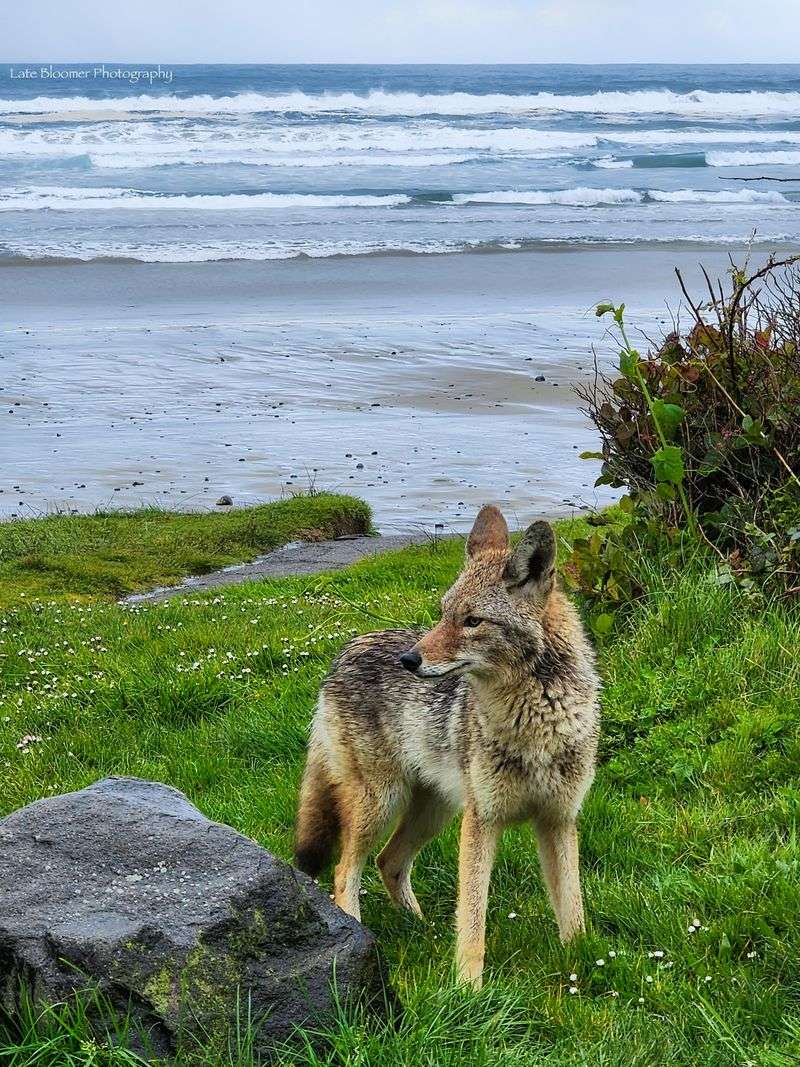
Along the rugged coastlines of Oregon, coyotes take on the role of coastal commanders. These canines patrol the beaches, their presence marked by tracks in the sand and the occasional sighting against the crashing waves.
The coastline offers a unique environment, where land meets sea, providing diverse hunting grounds. Coyotes here demonstrate remarkable adaptability, thriving amidst the salty air and coastal breezes. Oregon’s coyotes are not just survivors; they are rulers of the coastal realm, adapting to the rhythm of the ocean.

